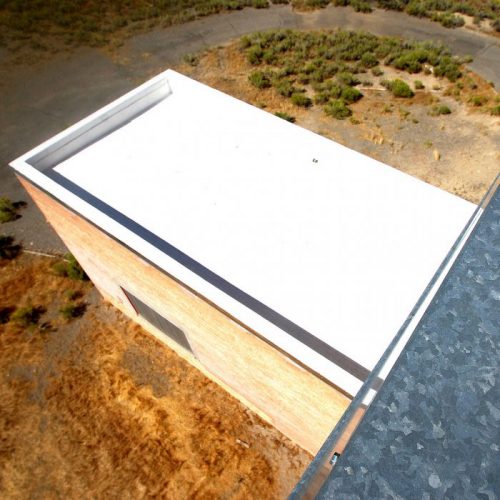#MoveTheDate
0.4
Days
Reducing the need for air conditioning with the installation of cool roofs would move Earth Overshoot Day by 0.4 days.
What is the solution?
Cool roofs are rooftops designed to reflect sunlight and reduce heat absorption. This is achieved by using white paint or other coatings. Cool roofs reduce the “urban heat island effect,” the phenomenon by which urban areas wind up being warmer than the surrounding regions.
This solution improves our resource security in the cities category.
How does it #MoveTheDate?
Studies have shown that if cool roofs were embraced globally, they have the potential to decrease urban temperatures by 0.3°C, on average. This lowers the energy demand for air conditioning, which makes up around 20% of electricity use in buildings worldwide.
How is it scalable?
Global demand for air conditioning is expected to triple by 2050 as a result of rising incomes, cheaper air conditioners, and warmer climates. Cooling is predicted to become the second largest source of energy demand. Cool roofs are a proven way to reduce the need for cooling, but their application is not yet widespread.
What is the solution?
Cool roofs are rooftops designed to reflect sunlight and reduce heat absorption. This is achieved by using white paint or other coatings. Cool roofs reduce the “urban heat island effect,” the phenomenon by which urban areas wind up being warmer than the surrounding regions.
This solution improves our resource security in the cities category.
How does it #MoveTheDate?
Studies have shown that if cool roofs were embraced globally, they have the potential to decrease urban temperatures by 0.3°C, on average. This lowers the energy demand for air conditioning, which makes up around 20% of electricity use in buildings worldwide.
How is it scalable?
Global demand for air conditioning is expected to triple by 2050 as a result of rising incomes, cheaper air conditioners, and warmer climates. Cooling is predicted to become the second largest source of energy demand. Cool roofs are a proven way to reduce the need for cooling, but their application is not yet widespread.
Cool roofs have played a key role in initiatives in India which address rising temperatures. The state of Telangana, a hot and rapidly expanding region in India, is developing a cool roofs policy based on a successful 2017 cool roofs pilot program in the city of Hyderabad. The Hyderabad pilot program found that implementing simple, affordable cool roof technology on homes lowered indoor air temperatures by an average of 2°C.
In addition to lowering overall energy demand, cool roofs could have the added benefit of reducing the risk of heat-related illnesses, particularly in low-income communities.
To learn more about cool roofs, see this report from the International Energy Agency and this paper from the American Geophysical Union.
There’s no benefit in waiting!
Acting now puts you at a strategic advantage in a world increasingly defined by ecological overshoot. Countless solutions exist that #MoveTheDate. They’re creative, economically viable, and ready to deploy at scale. With them, we can make ourselves more resilient and #MoveTheDate of Earth Overshoot Day. If we move the date 6 days each year, humanity can be out of overshoot before 2050.

